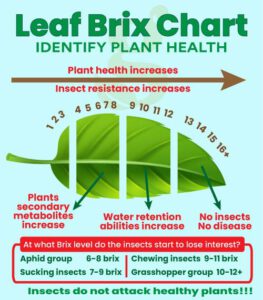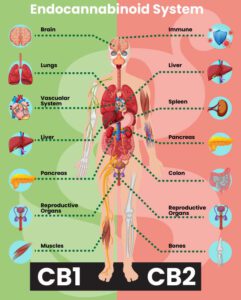
Brix in relation to crop health and quality
Brix in relatie tot gezondheid en kwaliteit van gewassen. De zoete wetenschap van Brix. Brix in relatie tot gezondheid en kwaliteit van gewassen. Brix-waarde verwijst
We are on holiday. Orders will be sent after May 22 Dismiss
More yield from better quality
All in just 5 products
25+ years of fertilizer experience
Better and cheaper
Easy to use
Photosynthesis is the process by which green plants, algae and some bacteria convert light energy into energy in the form of glucose. This process takes place mainly in the chloroplasts of plant cells, particularly in the chlorophyll-containing structures called thylakoids. At its core, it is like a green energy factory in plant cells.

Plants have special green pigments called chlorophyll, which are like tiny solar panels. These chlorophyll molecules capture sunlight, providing the energy needed for photosynthesis. In addition, plants absorb water from the soil through their roots and absorb carbon dioxide from the air through tiny pores in their leaves called stomata. With sunlight, water and carbon dioxide, plants initiate the complex chemical reactions of photosynthesis. These reactions take place in specialised structures in plant cells called chloroplasts.
During light-dependent reactions, the energy of sunlight is used to split water molecules into oxygen and hydrogen ions. This process releases oxygen into the air as a by-product. Meanwhile, the energy from sunlight is also used to convert ADP (adenosine diphosphate) and inorganic phosphates (P) into ATP (adenosine triphosphate), a molecule that stores energy. At the same time, NADP+ is converted into NADPH, another energy-carrying molecule.
In the light-independent reactions, also known as the Calvin cycle, ATP and NADPH are used to convert carbon dioxide into glucose, a simple sugar. This process takes place in the stroma of the chloroplasts. The glucose produced during photosynthesis serves as an essential energy source for plant growth, development and reproduction. It also provides the raw materials for building other organic molecules needed for plant functioning.
Overall, photosynthesis is a vital process that not only sustains plant life, but also enriches the atmosphere with oxygen, allowing all living organisms on earth to survive. It is nature's ingenious way of converting sunlight into the building blocks of life.
Nitrogen is essential for the synthesis of chlorophyll, the green pigment in plants responsible for capturing sunlight during photosynthesis. Sufficient nitrogen ensures healthy leaf growth and vibrant green colour, and optimises the plant's ability to absorb sunlight efficiently.
Phosphorus is involved in the conversion of light energy into chemical energy during photosynthesis. It promotes root development, which improves the plant's ability to absorb water and nutrients, ultimately supporting robust photosynthetic activity.
Potassium regulates the opening and closing of stomata, small pores on plant leaves that are crucial for gas exchange during photosynthesis. By maintaining stomatal function, potassium helps regulate water uptake and prevent water loss so that photosynthesis can take place under optimal conditions.

Gen1:11 Wholly Base. De basis voeding met alle NPK’s aanwezig on de fotosynthese processen te ondersteunen
Calcium (Ca): Although calcium is not directly involved in photosynthesis, it plays a crucial role in maintaining cell structure and function. It helps regulate cell permeability and facilitates the movement of other nutrients within the plant. In addition, calcium is essential for the activation of certain enzymes involved in metabolic pathways that support photosynthesis. Sufficient calcium contributes to the overall health of the plant and ensures efficient photosynthesis by supporting the structural integrity of cells and tissues.
Magnesium (Mg is a central component of the chlorophyll molecule, the pigment responsible for capturing light energy during photosynthesis. Without magnesium, chlorophyll synthesis is impaired, leading to reduced photosynthetic efficiency and poor plant growth. Magnesium also plays a role in activating enzymes involved in carbohydrate metabolism, further supporting the production of energy required for photosynthesis. Therefore, magnesium is crucial for optimising the photosynthesis process by ensuring the synthesis of functional chlorophyll molecules.
Iron (Fe) is a micronutrient essential for chlorophyll synthesis. It serves as a cofactor for enzymes involved in chlorophyll production and contributes to the green pigmentation of leaves and the efficient absorption of light energy. Iron deficiency can lead to chlorosis, a condition characterised by yellow leaves due to insufficient chlorophyll formation. By ensuring sufficient iron, fertilisers support robust chlorophyll synthesis, improving the plant's ability to capture sunlight and perform photosynthesis effectively.

Gen1:11 Solid Green. Bevat elementen voor sterke en groene planten met een optimale fotosynthese

Brix in relatie tot gezondheid en kwaliteit van gewassen. De zoete wetenschap van Brix. Brix in relatie tot gezondheid en kwaliteit van gewassen. Brix-waarde verwijst

Het endocannabinoïde systeem begrijpen Een korte handleiding voor CB1- en CB2-receptoren Het endocannabinoïde systeem (ECS) speelt een fundamentele rol bij het reguleren van verschillende fysiologische

7 handy tips to prepare for the new garden season Gardening tasks when the spring jitters strike: Spring is a time of renewal and

The development of hydroponic fertilisers through the ages The history of hydroponics is a story of innovation and perseverance, rooted in the quest of the

Creating a successful indoor grow involves more than just light and water. Here are 7 tips to boost your indoor garden.

Transforming urban heat islands into cool and livable cities The power of harnessing greenery for cooler cities As urbanisation increases, cities are struggling over
Brix in relatie tot gezondheid en kwaliteit van gewassen. De zoete wetenschap van Brix. Brix in relatie tot gezondheid en kwaliteit van gewassen. Brix-waarde verwijst
Het endocannabinoïde systeem begrijpen Een korte handleiding voor CB1- en CB2-receptoren Het endocannabinoïde systeem (ECS) speelt een fundamentele rol bij het reguleren van verschillende fysiologische
Photosynthesis Photosynthesis is the process by which green plants, algae and some bacteria convert light energy into energy in the form of glucose. This process mainly takes place
7 handy tips to prepare for the new garden season Gardening tasks when the spring jitters strike: Spring is a time of renewal and
The development of hydroponic fertilisers through the ages The history of hydroponics is a story of innovation and perseverance, rooted in the quest of the
Creating a successful indoor grow involves more than just light and water. Here are 7 tips to boost your indoor garden.
Home » Photosynthesis

Because growing your own is a craft. It takes time, energy, focus, attention, maybe even love. At your own pace, in your own environment. You are the creator.